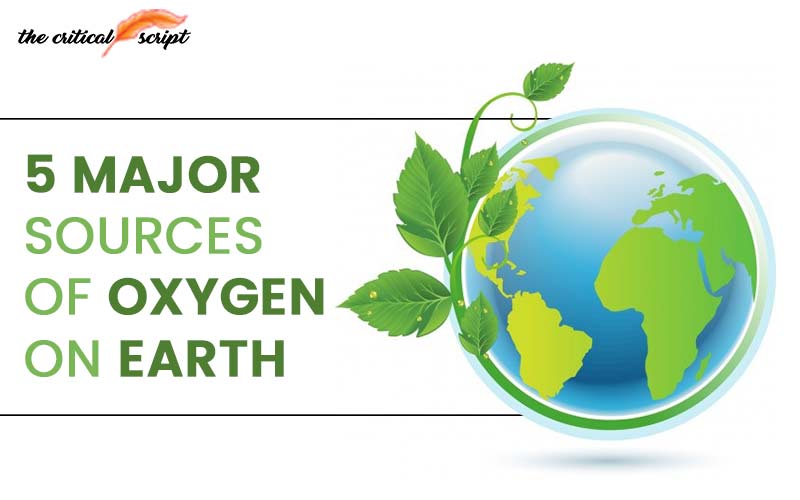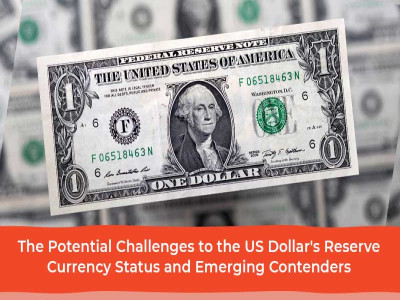
5 Major Sources of Oxygen on Earth
Almost all living beings require oxygen to live. The air that fills our lungs is primarily a blend of nitrogen, making up about 78%, and oxygen, constituting around 21%, with a small percentage of other gases like carbon dioxide, neon, and hydrogen. Our ability to breathe requires oxygen, which is constantly replenished by a variety of natural processes and ecosystems. This article examines the major sources of oxygen on the planet, such as the oceans, forests, and phytoplankton.
1. The Ocean
Forests are frequently the first thing that comes to mind when we think about oxygen generation. However, the importance of the world's oceans is at least as great. Oceans, which make up around 71% of the Earth's surface, are thriving with organisms that produce oxygen.
Similar to their land-based cousins, marine plants such as seaweed and seagrass produce oxygen through photosynthesis. However, phytoplankton, a kind of microscopic creature, make the biggest contribution.
2. The Phytoplanktons
The production of oxygen is greatly aided by phytoplankton, microscopic photosynthetic organisms that float close to the surface of rivers and oceans. Despite their tiny size, these creatures produce approximately half of the oxygen on Earth through photosynthesis, producing as much oxygen as all of the world's forests put together.
Sunlight, carbon dioxide, and water nutrients are used by phytoplankton to create glucose and oxygen. They serve as the base of the marine food web and provide a habitat for a wide variety of marine animals. On the other hand, modifications in ocean temperatures and acidity, mostly brought on by climate change, can have a considerable effect on phytoplankton populations and, as a result, on the level of oxygen in the atmosphere.
3. The Forests
A major portion of the world's supply of fresh oxygen comes from forests. They are frequently referred to as the "lungs of the earth" because they play a crucial role in the global carbon cycle by absorbing carbon dioxide during photosynthesis and releasing oxygen into the atmosphere.
Due to their extensive biodiversity and dense vegetation, forests, particularly tropical rainforests, are very effective at this process. 20% of the world's oxygen is thought to be produced by the Amazon Rainforest alone (although this is just speculation). But these crucial ecosystems are seriously threatened by deforestation and forest degradation, highlighting the importance of sustainable forest management and conservation initiatives.
4. The Grasslands
Grasslands are another key source of oxygen because they are home to grasses, shrubs, and other plants that use sunlight to break down carbon dioxide and water into glucose and oxygen. In contrast to forests, grasslands store the majority of their carbon in the soil and the roots of their plants. Grasslands, which are present on every continent except Antarctica, not only produce oxygen but are essential for preserving biodiversity and food production, as well as having an impact on the world's ecology.
5. The Wetlands
Wetlands, which are regions of land covered in water for at least a portion of the year, also contribute to the global supply of pure oxygen. These ecosystems, which are home to different kinds of algae, produce oxygen through photosynthesis. Decomposing plant debris is a common feature in wetlands, attracting a variety of bacteria and other small organisms that consume it and release oxygen as a byproduct.
Conclusion:
Our atmosphere contains oxygen because of a number of natural processes that have supported life on planet Earth for several million years. Overall, these oxygen sources are significant ecosystems that make a big difference in the amount of oxygen produced in the atmosphere. These ecosystems are crucial for preserving the equilibrium between carbon dioxide and oxygen in our environment. Because the oxygen cycle depends so heavily on ecosystems including forests, oceans, and phytoplankton, among others, any negative alterations to these ecosystems could have far-reaching negative effects. To ensure that our world continues to supply us with pure oxygen, it is crucial that we take action to conserve and preserve these ecosystems.
Disclaimer: The opinions expressed in this article are those of the author's. They do not purport to reflect the opinions or views of The Critical Script or its editor.

Newsletter!!!
Subscribe to our weekly Newsletter and stay tuned.

















Related Comments